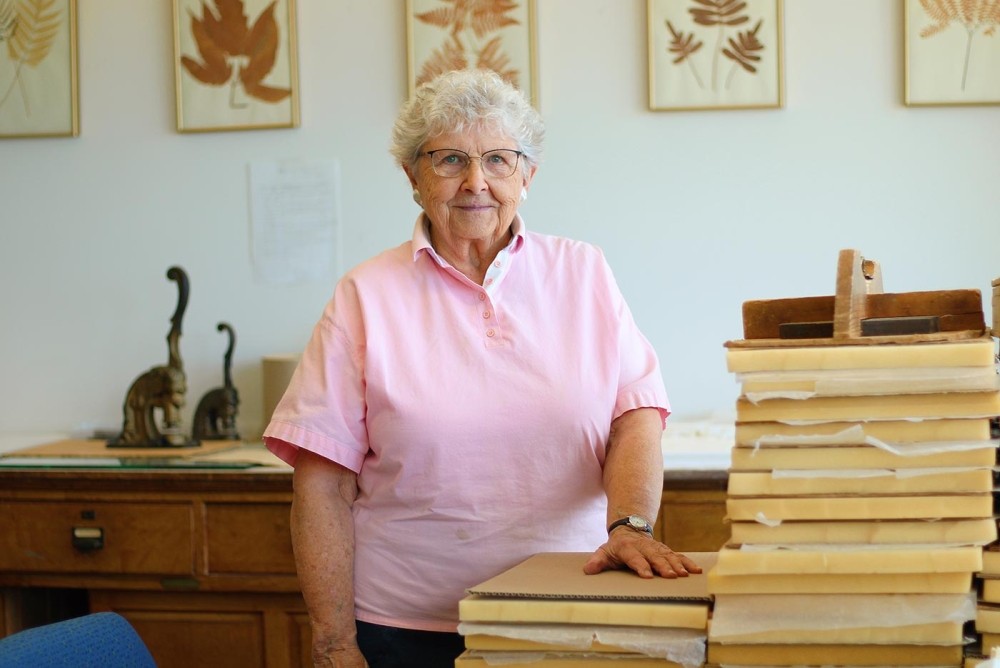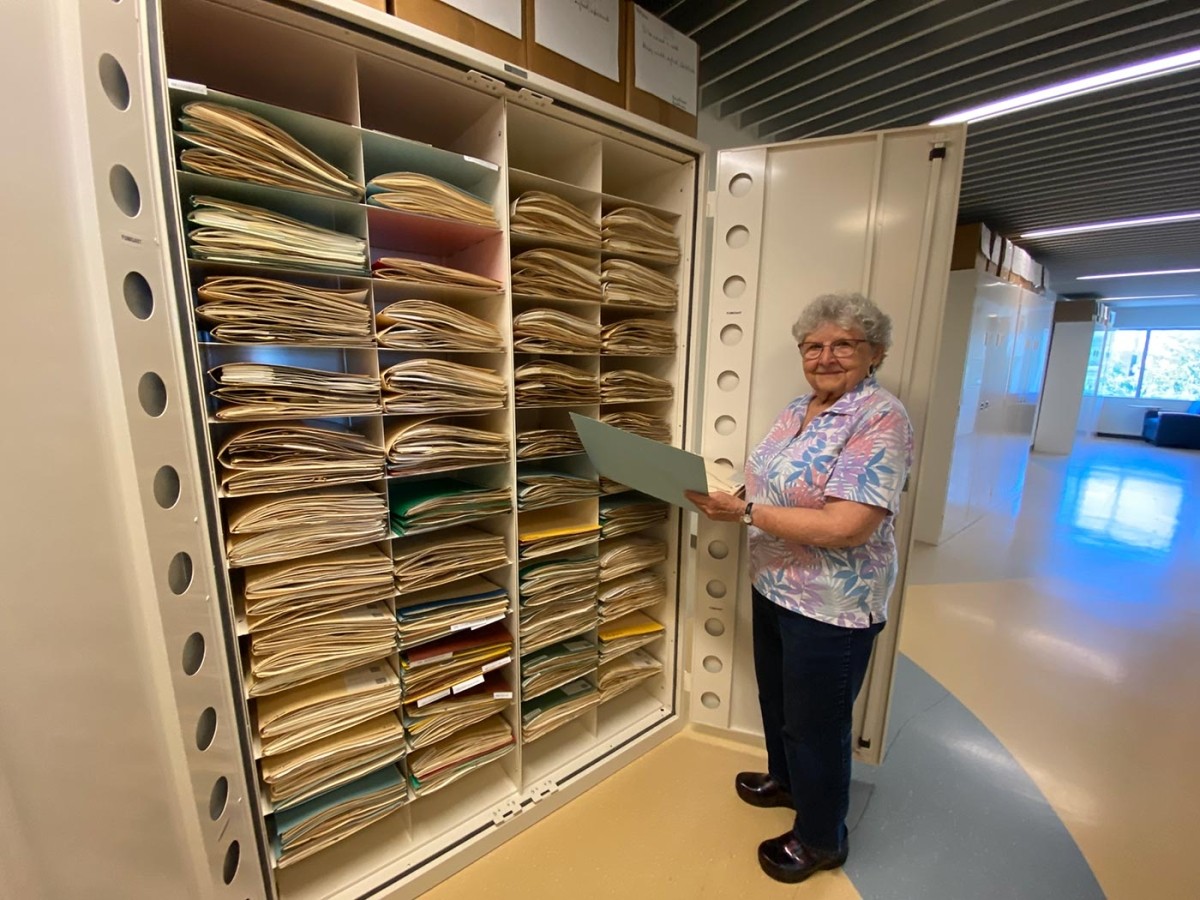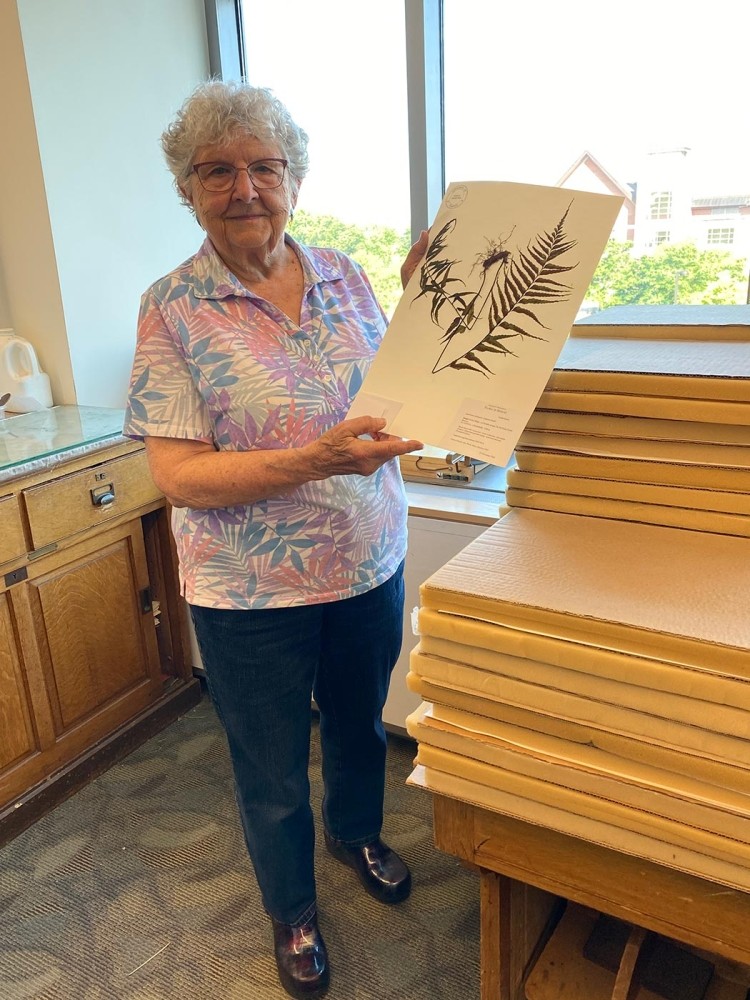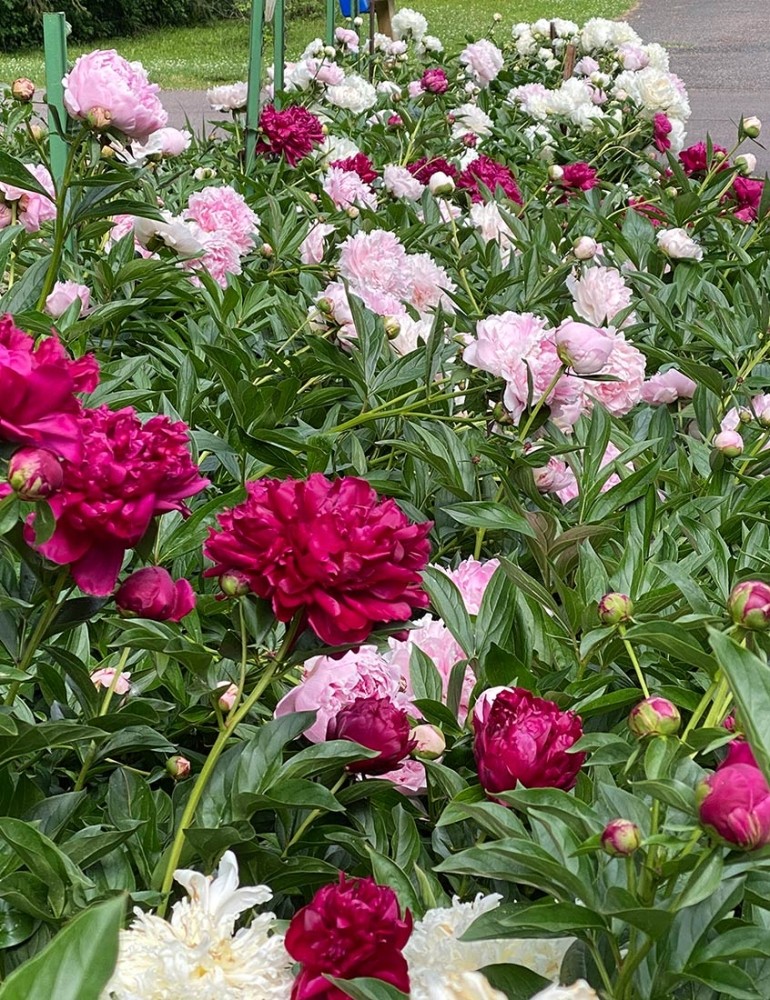Hilda White has always loved flowers – and the sciences. In 1951, she graduated from Cornell University with a degree in chemistry. For the next 45 years, she worked in a variety of lab settings, retiring as a lab technician at the University of Vermont in 1998. But it is her volunteer work since then that will, perhaps, have the most lasting impact. For the past 25 years, Hilda has been the collections co-manager at UVM’s Pringle Herbarium, where she has mounted some 50,000 specimens to be added to the collection there. At age 92, Hilda remains active through this work, as well as volunteering at Shelburne Museum, helping her son pick fruit from his orchard, stewarding her family’s woodlot, and maintaining her own flower and vegetable gardens at her home in Shelburne, Vermont.
I grew up in New Jersey. My father was a florist, and he had greenhouses and grew flowers for the New York City flower market. I have always loved flowers. I worked with my father in the greenhouses when I was young. I helped plant seedlings, because I had a gentle touch. And I helped water. In those days, they didn’t have pesticides, so the dirt had to be changed in the greenhouses every few years. All the dirt got carted out and carted away, and fresh dirt was brought in. Where we were was quite rural. We had peach orchards all around. The town had 7,000 people in it, and it was on the railroad. My father only had to get the flowers from the house to the train station, and then they got picked up in the city. During World War II, people didn’t have much to spend their money on, and they bought flowers, so the flower business was pretty good during the war.
I went to Cornell University in Ithaca, New York, and I majored in chemistry. I liked chemistry in high school. My father said you have to study something that you can get a job in after you graduate. This was when all the veterans were coming home from World War II. The Navy put my brother through MIT, so the money that would have gone to him was left for me to go to college. I don’t know how I got into Cornell. I think they just decided they needed a few women. At the time, the ratio was seven men to one woman at Cornell. There were only about 12 chem majors when I went, including 3 women. We were treated pretty well. It was very stimulating times.
My first job after college was at MIT in the food department lab. Then I married, and my husband ultimately became a professor. We moved out to California for his post-doc, and I worked at Cal Tech in a lab with Nobel Prize winner Renato Dulbecco. That was interesting. From there, my husband got a job at Ohio State as a professor, and we were there for 10 years. Then he was lured to Vermont as chairman of the Chemistry Department at UVM, and we came here and I’ve been here ever since. I worked in my husband’s lab at UVM, and sometimes I taught laboratory sections in chemistry. I did that until we retired.
My husband and I fell in love with Vermont when we moved here in 1963, and we bought a woodlot. It’s a 192-acre woodlot, and it is in the Tree Farm system. For many years, we made cross-country ski trails and harvested wood for the wood-burning stove. One of the requirements is to have a management plan, which has to be updated every 10 years. I have a forester who oversees the work. I’m getting pretty old, and I don’t get up there very much because it’s on a steep hill.
Around the house I grow lots of flowers and a small veggie garden. I live on a place where it’s sort of on the edge of a cliffy drop. There was no room for my veggie garden out back, so my veggie garden is out in the front. All my neighbors come by and look at my flowers and admire the veggies when they come in. And there are lots of wildflowers, too. Right now it’s peony time in my garden. They’re wonderful. The peony plants have been in the ground since 1968, and they’re in a long row that serves as the border of the veggie garden. When a plant has been around that long, they’re really established. They bloom like crazy.
When we retired, I took courses in the botany department. I took a course in systematics with Cathy Paris, and she brought the class over to the herbarium to learn about what a herbarium is. At that time, there were lots of cabinets, and on top of the cabinets were boxes stacked four high. And Cathy waved her hand at those and she said, “If anybody would like to volunteer, those boxes are full of plants that need to be mounted.” And I thought, “Well, that’s something that will last a long time if I do that.” So I started, and I’ve been doing that for 25 years. I’ve mounted more than 50,000 specimens, and that makes me feel good.
The plants come to us in different ways. Some are from local collectors, but we get plants that have been collected from all over the world. The plants come to us dried flat in newspapers, and the collector has always put a label on. I take the dried plant, and I put it on a sheet of heavy-weight herbarium paper. It’s 18 inches-by-12. It’s very thick and heavy. The label gets glued on in the lower right-hand corner, and you position the plant so it fits onto the sheet, and it looks as nice as you can possibly make it. They’re glued on with just Elmer’s glue, diluted with water. Then they get pressed for at least 24 hours with a heavy weight, interspersed with foam – so that if there’s something sticking up in the plant, the foam molds around it so the weight doesn’t squash everything. I do this in stacks, and the next time I come in, I take them apart. And from there they go to be digitized – so that you can look up a plant and find it in another herbarium. Once that’s done, then the plant gets inserted into the collection.
The collection works like a library. There are 413 families of plants recognized in the world. All the plants in the herbarium are in sealed cabinets. Each plant gets filed by family, then genus, and species. If anybody is interested in the plant, they can look it up online and see the photograph and the label so they know where the plant is from. If they’re doing an in-depth study of a particular plant, they can ask for a loan. My coworker at the herbarium, Eunice Froeliger, is in charge of the loans, and she packages them up and sends them away. This exchange goes on constantly, all over. The work is really rewarding. I get to meet undergraduates, who help sometimes. I get to meet the graduate students, the visiting botanists. It’s intellectually interesting. And the work satisfies my artistic psyche. Sometimes, if the plants have been dried correctly, you can make the specimen look gorgeous.
If the person who collects the flowers does it the right way, they can still be beautiful even if they’re dried. Most of the time, especially if they’re collected in the tropics, they can’t dry fast enough, so the plants are frequently brown when I get them. The oldest plant I ever mounted was from 1830-something.
Our herbarium is called the Pringle Herbarium. Cyrus Pringle was a great collector. His stuff from 1900 is still green, because he could do it right. It’s amazing. When a collector finds a new plant species and names it, it’s called a type specimen, and we have a whole bunch of those – the very original plant that the species name was put on to – because Cyrus Pringle collected a lot in Mexico. When the railroads were opening up – this would be in the 1890s, early 1900s – he would ride out on the railroad to the end and collect, and nobody had ever collected there before.
The herbarium at UVM is actually a small collection, but it’s over 350,000 specimens. If you go to the New York Botanical Garden, I think that collection has 10 million or something like that. And Harvard, Chicago, Missouri Botanical Garden – they are huge. And the ones in France and England are very big.
But our herbarium is very active. In the past 20 years, studying plants as plants has sort of gone out of style. Many places have gone to just taking little samples of things and studying their DNA and doing the research that way and not really using the herbaria. That’s one reason our herbarium is growing a lot, because other herbaria are closing, and we’re absorbing some of those collections. Research goes in styles. What’s fascinating at one point isn’t necessarily fascinating 30 or 40 years later.
A lot of people have no idea what a herbarium is. I think it’s an important thing. I think I’m just so lucky to be able to work there. I wasn’t very happy during Covid when we all had to stay home for a year. I was really happy to get back.






Discussion *